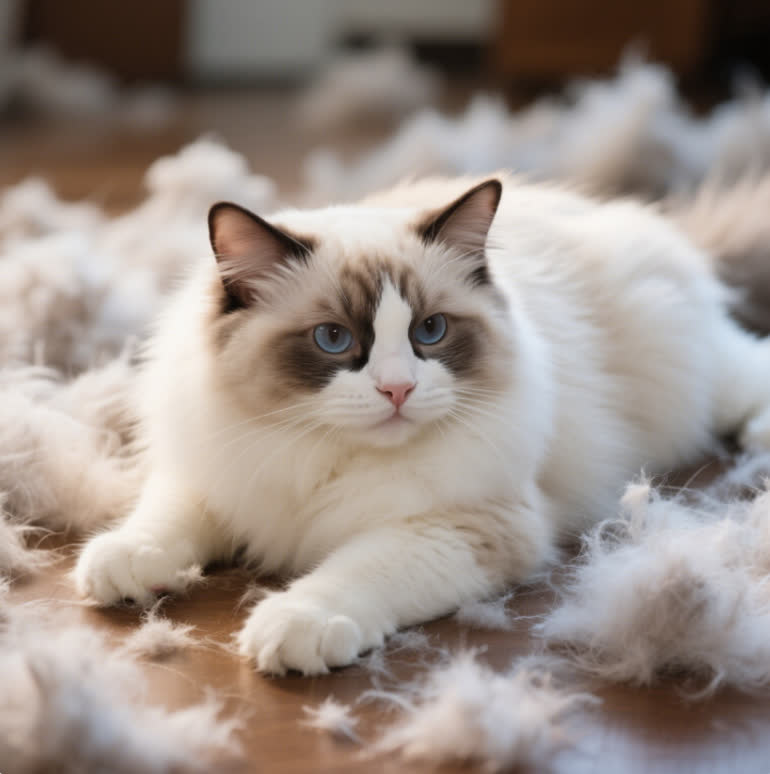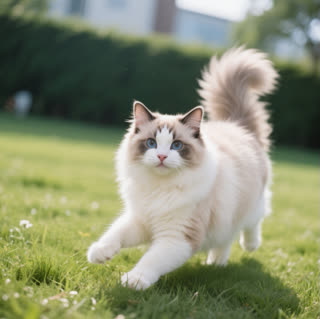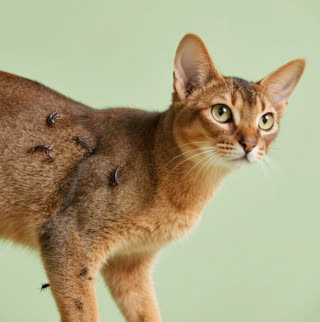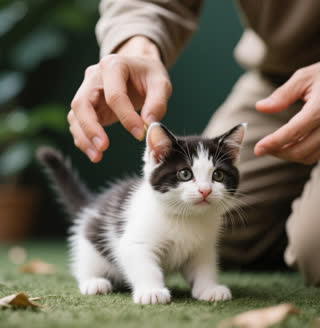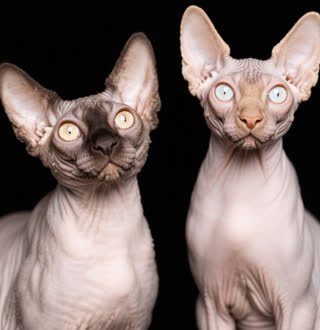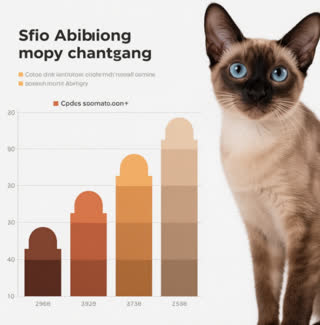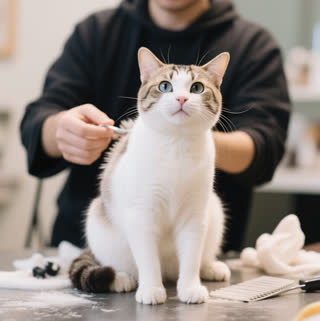If you’re the proud owner of a Ragdoll cat breed, you’ve likely fallen in love with their luxurious semi-longhaired coats and striking blue eyes. However, managing their shedding can be a challenge. In this comprehensive guide, we’ll explore proven methods to reduce shedding in Ragdoll cats effectively, ensuring a healthier coat for your feline friend and a cleaner living space for you.
Understanding Ragdoll Cat Shedding Patterns
Ragdolls are known for their plush, silky fur, which requires regular maintenance to stay tangle-free and healthy. Unlike breeds with dense undercoats, Ragdolls shed less frequently but still experience seasonal molting, particularly in spring and fall . Indoor cats may shed year-round due to consistent temperatures, while outdoor cats adapt to natural climate changes . Factors like diet, stress, and genetics also influence shedding intensity. By addressing these root causes, you can significantly reduce the amount of fur around your home.
1. Optimal Diet for a Healthy Coat
A balanced diet is foundational to minimizing shedding. Ragdolls thrive on high-quality protein sources like chicken or fish, which support skin health and hair follicles . Incorporate omega-3 fatty acids (e.g., fish oil or flaxseed) to reduce inflammation and promote a shiny coat . Avoid table scraps and low-quality kibble, as these can cause nutrient deficiencies and excessive shedding . For best results, consult your veterinarian to tailor a diet plan for your cat’s specific needs.
2. Regular Grooming Routine
Grooming is the cornerstone of managing Ragdoll shedding. Brush your cat 2-3 times weekly using a stainless-steel comb or slicker brush to remove loose fur and prevent matting . Start with gentle strokes on the neck and back, gradually moving to sensitive areas like the belly and legs . Bathing every 6-8 weeks with a cat-friendly shampoo can also help, but avoid over-washing, as it strips natural oils . Finish by wiping your cat with a damp cloth to collect residual hairs .
3. Environmental Adjustments
Ragdolls are sensitive to temperature fluctuations. Maintain indoor temperatures between 68-72°F (20-22°C) to mimic their ideal climate and reduce heat-induced shedding . Use humidifiers in dry seasons to prevent skin dryness, which can exacerbate hair loss . Additionally, provide stress-free environments by minimizing loud noises and creating cozy hiding spots, as anxiety triggers cortisol release—a hormone linked to increased shedding .
4. Health Monitoring and Veterinary Care
Chronic shedding may signal underlying health issues like allergies, parasites, or hormonal imbalances. Regular vet check-ups can rule out conditions such as hyperthyroidism or dermatitis . Ensure your cat is up-to-date on flea and tick preventives, as these pests irritate the skin and cause excessive grooming . If shedding is accompanied by bald patches or lethargy, seek immediate medical attention .
5. Nutritional Supplements
Supplements can enhance coat health when added to a balanced diet. Omega-3 supplements (e.g., salmon oil) improve skin elasticity and reduce shedding . Biotin and zinc tablets support hair growth, while probiotics aid digestion and nutrient absorption . Always consult your vet before introducing new supplements to avoid interactions with existing medications.
6. Seasonal Shedding Management
During spring and fall, Ragdolls shed their winter and summer coats, respectively. Increase brushing frequency to daily sessions during these periods . Use a deshedding tool like the Furminator to target loose undercoat hairs gently . Vacuum regularly and invest in a HEPA air purifier to capture airborne allergens and reduce fur buildup .
7. Stress Reduction Techniques
Stress is a common culprit behind excessive shedding. Create a predictable routine for feeding, play, and sleep to comfort your cat . Provide interactive toys like puzzle feeders to keep them mentally stimulated . Pheromone diffusers (e.g., Feliway) can also calm anxiety during transitions like moving homes or introducing new pets .
8. Professional Grooming Services
For owners struggling with time or patience, professional grooming services offer a solution. Stylists use specialized tools to trim excess fur and detangle mats, reducing shedding and preventing hairballs . Regular trims around the belly and hind legs can also minimize fur accumulation in hard-to-reach areas.
Conclusion
Effectively managing shedding in Ragdoll cats requires a holistic approach, combining proper nutrition, consistent grooming, and environmental care. By implementing these strategies, you’ll not only reduce fur around your home but also ensure your Ragdoll’s coat remains healthy and lustrous. Remember, every cat is unique—adjust your routine based on your pet’s needs and consult your veterinarian for personalized advice. With dedication, you can enjoy the beauty of your Ragdoll without the hassle of excessive shedding.
